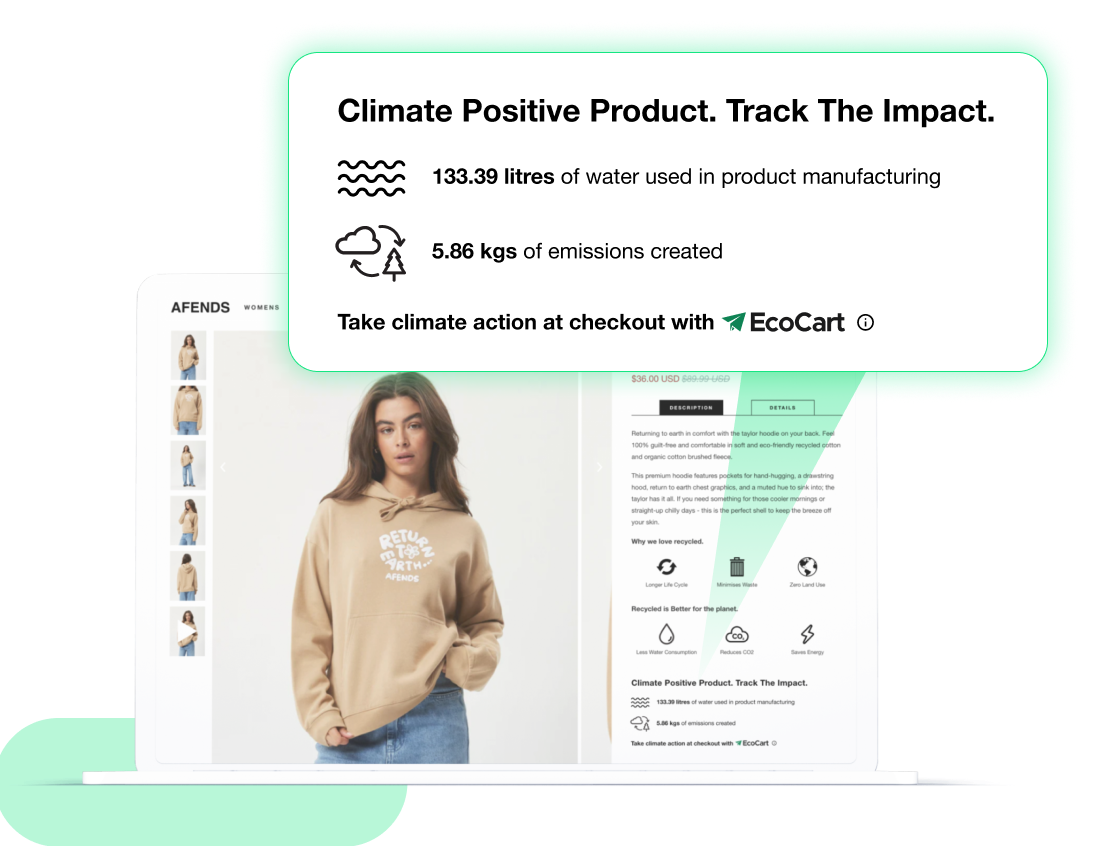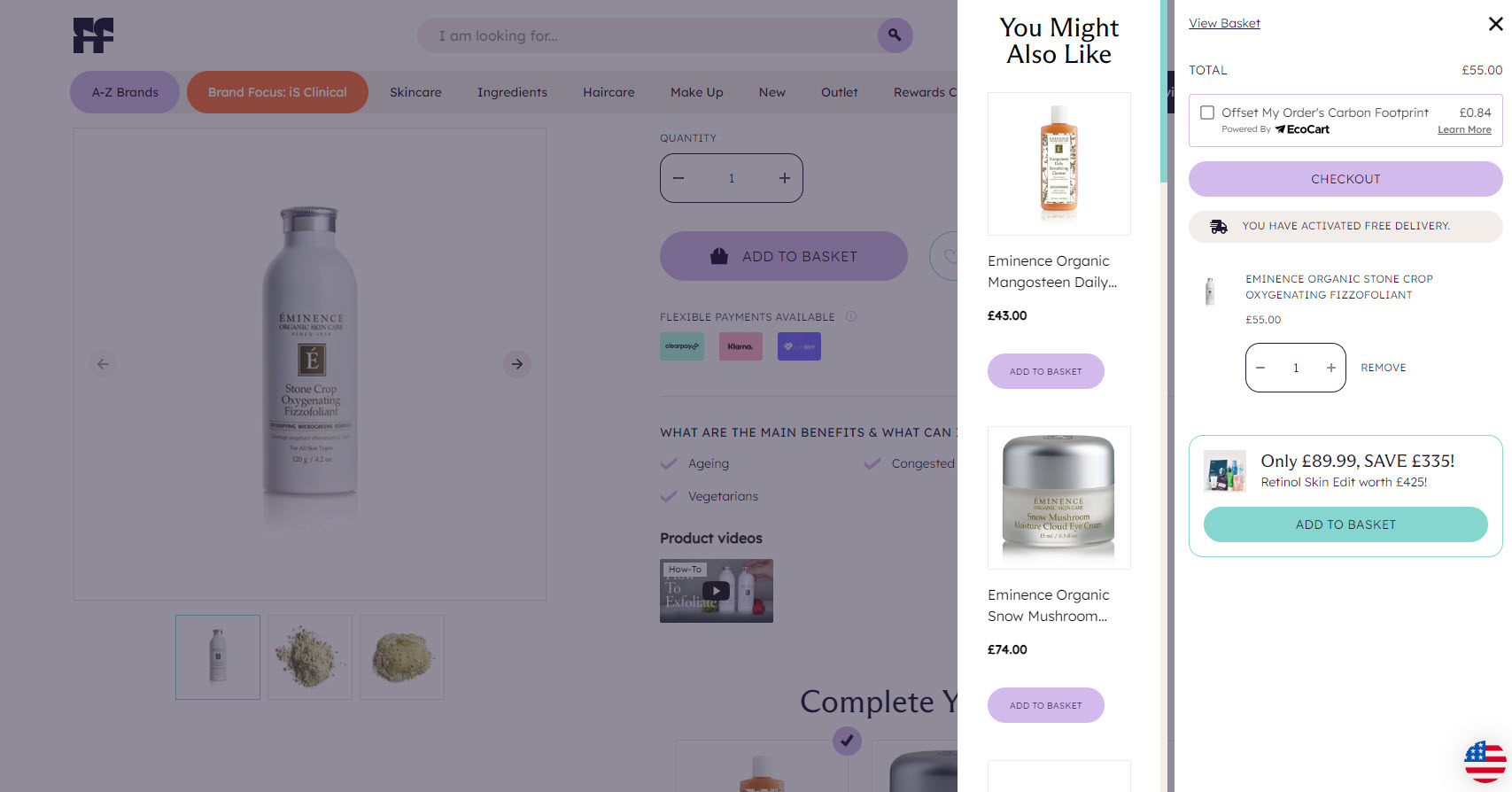With so many direct to consumer brands claiming sustainability, it is extremely important to highlight why and how your company is actually sustainable. Consumers are no longer satisfied with vague sustainability claims, but now demand sustainability in DTC retail.
Luckily, parcelLab studied the sustainability performance of the UK’s top 50 DTC brands and have put together a list of the top ways these DTC retailers are paving the way for sustainable business practices. Meet consumer demand and reduce your environmental impact with these 8 quick sustainability tips for DTC retailers.
1. Educate customers on the carbon footprint of their order
By adding the carbon footprint of each order at checkout your consumers will know that the sustainability efforts of your company are not for show. Many people do not know the full impact of their online orders; this will educate your consumers and make you stand out from other DTC brands.
So how can ecommerce DTC brands do this? EcoCart’s Product Detail Transparency widget evaluates your brand’s environmental impact along the entire supply chain, helping retail brands identify areas for improvement. Sustainable businesses can showcase this data right on their product pages for their customers to see in real time.

Customers appreciate this transparency, too. Simbly, a furniture company, saw a 38% increase in Average Order Value (AOV) and Tribe Kelley, a US clothing brand, saw a 19% boost in cart conversions after installing the widget on their respective product pages.
2. Give customers the option to carbon offset at checkout
Now that your customers know the environmental impact of their order, DTC brands should offer offsetting tools during checkout. EcoCart’s Carbon Neutral Checkout solution is a great tool to help you do just that. Nuzest saw a 22% increase in cart conversions after installing EcoCart, demonstrating how much consumers are not only appreciative of the option but eager to offset their orders.
Face the Future uses EcoCart to offer carbon offsetting at checkout:

Pro Tip: Reward those who are offsetting their carbon footprint with a green loyalty program and watch your customer brand loyalty skyrocket alongside your conversions.
3. Give customers the option to reduce packaging
How many times have you ordered something small online and it comes in a giant box? This is wasted packaging AND takes up more space in the van or truck delivering it to you. Make sure the right box is available for all products through auditing packaging sizes. The less packaging your brand uses, the more sustainable it is.
4. Give customers the option for unbranded packaging
Unbranded packaging?? Don’t worry, your customers don’t care about the box, they care about the package. The need for branded packaging comes at an expense to the environment. Give customers the option to choose recycled materials for packaging, branded or not, and make sure to always display a sweet sustainability messaging to thank them for choosing to be green.
5. Remove those pesky brand inserts
Brand inserts may be a great way for many DTC brands to engage with customers, but most people throw them away immediately. Instead, take advantage of delivery communication emails. They have open rates upwards of 80% and this will make the carbon footprint of the order smaller. Your brand will also be reducing waste too. BONUS: Your customer will be highly engaged with the content.
6. Improve first-time delivery likelihood
Hosting your own order status page and, if possible, including a time slot for delivery will allow your customers to know when their order is arriving. This means no wasted journeys for the courier and even better, customers who are happy and home to receive their packages.
7. Include recycling and sustainability messaging during delivery communication
Use the marketing emails to your advantage! Take the opportunity to share information on how to recycle packaging, or create fun and useful ideas for repurposing.
8. Promote paperless returns
This is becoming the industry norm in e-commerce! Instead of using unnecessary materials for the return, join the movement and ditch the printed labels. Many drop-off locations are going paperless in recent years, proving to be a simple yet sustainable innovation that makes returns convenient for consumers. You can use your delivery communications to explain the return process and make life so much easier for your customers.
About ParcelLb
ParcelLab is focused on the brand-to-consumer relationship and the goal of bringing DTC brands closer to their customers. In their recently published sustainability guide, you can read all the findings of their study. Check it out here! We are so thankful to have been a part of this and help DTC brands focus on their sustainability journey!



